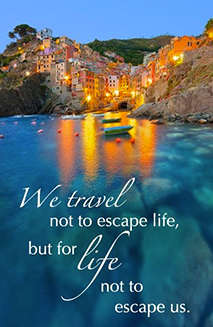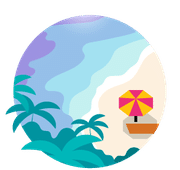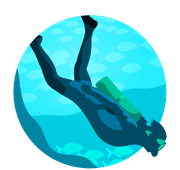- 1800-123-5555
- Travel Agent? Join Us
- Blog
- Offers

White Desert in Kutch, Gujarat
For the adventurous spirit, The White Desert is a perfect place to visit
Rated 4.40/5 ( based on 807 reviews )
About White Desert in Kutch
White Desert in Kutch, also known as the Great Rann of Kutch, is located in western Gujarat. One of the hottest regions in India, the desert is the site of popular Rann Festival in Gujarat which is held from November to February every year. Camel rides, hot air balloon safari, jeep safaris, and watching cultural dances are popular things to do in White Desert in Kutch.
Situated at the Indo-Pak border, the astonishing Great Rann of Kutch is also the largest salt desert in the world. A paradise for every holiday seeker, if one wants to savor its vibrant culture, then opting for a tour package for the Rann of Kutch, especially during the Rann Festival is one of the best ideas to go with. An excursion through the white deserts lets its visitors witness the many colorful aspects of this region that it is made of. In addition to that, one can also grab a chance to take a sneak peek into the lives of the locals, which in itself is a unique experience.
Rann of Kutch Festival
Spanning 30000 square kilometres between India and Pakistan lies a salty marsh called the Rann of Kutch. This is the largest salt desert in the world. It is made up of three parts: The Great Rann of Kutch, the Little Rann of Kutch and the Banni grasslands. The word Rann is derived from the Sanskrit word ‘Irina’, which means desert.
The best time to visit Rann of Kutch is during the Rann Utsav. The famous Rann Utsav in white desert of Kutch is held every year in the winter season. From November through February, the cultural activities at Rann of Kutch Festival enthrall tourists of all ages.
This Marsh can be accessed through the Kharaghoda Village of Sundernagar District. The monsoon rains fill the flat lands of the marsh with water. This land is approximately 49 feet above sea level and has no outer drain and the water stagnates here. During the summer as the hot sun causes the water to evaporate, a bed of minerals and salt is left behind, which creates this unique salty marshland. During exceptionally heavy monsoons, the wetlands extend from the Gulf of Kutch on the west through to the Gulf of Cambay on the east.
Geographical Division
Studies have proved that this area was an extension of the Arabian ocean. Seismic activity caused the land to rise near the shore creating a lake. This lake is said to have been in use until the time of Alexander the Great.
The Ghaggar River used to feed the Rann of Kutch until it began to dry out. This happened due to seismic activity, which altered the course of its tributaries to the Indus. The traces of the old delta, the change of river courses and the formation of the Rann has been documented in detail by the Geographical Society of India.
Today the river Luni feeds the Rann of Kutch in from the northwest and the river Rupen from the east and the river Banas from the west.
Being part of a desert, the temperatures are the highest in the sub-continent. The temperature can go up to 50 degrees and higher. However, the winter temperatures can drop equally low with even zero degrees being recorded frequently.
Ecologically Rich lands
The unique nature of the land has given rise to vegetation, which has become home to some varied species of animals and birds. Flamingos and other migratory birds call the Rann their home. As do the Chinkaras, nilgai, wild asses and much more.
Most of the marsh has been marked off as a protected area with limited access to human beings. Several animal sanctuaries have been formed to protect the local species. Indian Wild Ass Sanctuary, Kutch Desert Wildlife Sanctuary, Narayan Sarovar Sanctuary, Kutch Bustard Sanctuary, Banni Grasslands Reserve and Chari-Dhand Wetland Conservation Reserve, are places to be visited to get to see the wildlife.
Take a look at our Kutch tour packages and Rann of Kutch tour packages to start your journey.
Popular Packages
Unlimited Choices. Trusted Agents. Best Prices. Happy Memories.
Cities:
- Diu
Starting from:
₹9,000/-
₹9,574/-6% OffCities:
- Diu
Starting from:
₹9,500/-
₹10,106/-6% OffCities:
- Diu
Starting from:
₹9,500/-
₹10,106/-6% OffCities:
- Diu
Starting from:
₹9,500/-
₹10,106/-6% OffCities:
- Diu
Starting from:
₹9,500/-
₹10,326/-8% OffCities:
- Dwarka
Starting from:
₹9,599/-
₹10,434/-8% OffCities:
- Dwarka
Starting from:
₹9,600/-
₹10,786/-11% OffCities:
- Gir
Starting from:
₹10,000/-
₹10,638/-6% OffCities:
- Dwarka
- Somnath
Starting from:
₹10,333/-
₹11,111/-7% OffCities:
- Bhuj
Starting from:
₹10,599/-
₹11,276/-6% OffCities:
- Diu
Starting from:
₹10,999/-
₹11,827/-7% OffCities:
- Ahmedabad
Starting from:
₹11,200/-
₹11,789/-5% OffCities:
- Ahmedabad
- Vadodara
Starting from:
₹11,499/-
₹12,365/-7% OffCities:
- Sasan Gir
- Gir
Starting from:
₹11,648/-
₹12,800/-9% OffCities:
- Jamnagar
- Dwarka
- Veraval
- Somnath
Starting from:
₹12,000/-
₹13,333/-10% OffCities:
- Diu
Starting from:
₹12,100/-
₹13,152/-8% OffCities:
- Dwarka
- Veraval
- Somnath
Starting from:
₹12,400/-
₹13,478/-8% OffCities:
- Dwarka
- Somnath
Starting from:
₹12,499/-
₹13,440/-7% OffCities:
- Sasan Gir
- Dwarka
Starting from:
₹12,499/-
₹13,440/-7% OffCities:
- Kutch
Starting from:
₹12,600/-
₹13,548/-7% OffPlaces To Visit In Kutch
Let the experts guide you to the best of this mesmerizing destination
View AllMandvi Beach In Kutch
A little sea side town in Kutch, Gujarat, Mandavi has several claims to fame. Among others is the Vijay Vilas palace, now made famous by Bollywood movies, and the second is the Wind Mills which dot the Mandvi Beach in Kutch.
History made by the ship makers of Mandavi
This port town was set up by the Maharao of the prince...
- Beach
- Adventure
- Family fun time
- Beach activities
Prag Mahal In Kutch
Bhuj is set in a desert, a land so arid that there is no respite from the sun. Yet the colour of the people and their culture shines forth in many ways. The history of the land is also rife with stories of people wanting to add to the rich heritage. One such mark on the history of Bhuj is the Prag Mahal.
Legacies of a Raj...
- Historic sightseeing
- City Tour
- Photography
- Shopping
Dholavira in Kutch
The Indus Valley civilization is one of the oldest civilizations in the world, as told by our history books. The civilisation was formed around the area fertilised by the Indus River and its tributaries. Archaeologist and historian have had an ongoing love affair with this period in history and periodical finds of sites of ...
- Sightseeing
- Historical Sites
- UNESCO World Heritage Site
Bhuj Chattardi in Kutch
Bhuj, the capital of Kutch District, has an ancient past. It has been the capital for the Maharaos of the princely state of Kutch for many centuries. Monuments found around the town bear testament to the era gone by.
A Cenotaph’s complex
The cenotaph’s complex is an interesting place. The complex is a set of monuments er...
- Sightseeing
- City Tour
- Historical Sites
Kutch Museum in Kutch
This is one of the oldest museums in Gujarat. But if you want a glimpse into the past of the region, the Place to come to is the Kutch Museum. It is set on the shore of the beautiful Hamirsar Lake in Bhuj.
A house for wedding gifts
When Maharao Khengarji III, the Maharao of the princely state of Kutch, got married in 188...
- Sightseeing
- Museum
- Historical Sites
Things To Do In Kutch
Your list of the best things to do, compiled on the basis of actual traveler experiences
View AllRann Of Kutch In Kutch
Rann of Kutch is a vast salt marshy area in the Kutch district in the Indian state of Gujarat, parts of the Rann of Katch region lies in the Sindh region of Pakistan. The region is divided into two parts, one is called the Great Rann of Kutch and the other one is called the Little Rann of Kutch. The region supports both the...
- Cultural shows
- Adventure
- Desert Safari
- Traditional music
Koteshwar Temple in Kutch
Koteshwar is tiny village set in the west Kutch. In the village on the banks of the Kori Creek is the famous Koteshwar Mahadev temple. When the high tide comes in the temple, it gets cut off from the mainland. But with the roads being developed in the region, the temple is now accessible all through the year.
.. set on a ...
- Temple
- Religious Tour
- Ideal for families
Our experts would love to create a package just for you!
Fill in your requirements here >
Fastest Growing Holiday Marketplace
650+
Verified Agents
22 Lac+
Happy Travellers
65+
Destinations
Easy, Secure & Reliable
Traveltriangle
Verified
Stringent
Quality Control
24/7
Support
What Travelers Say About Our Kutch Packages
Read real reviews,packages, stories, and experiences from happy customers who booked with TravelTriangle.
Simmi Batra
Ahmedabad
Simmi's 7 days trip to Kutch
Gaurav Gupta
Jalandhar
Gaurav's 10 days trip to Kutch
Sandeep Chauhan
Delhi
Sandeep's 5 days trip to Kutch
Balaji Kn
Rajkot international airport
Balaji's 5 days trip to Kutch
Ritu
Ritu's 5 days trip to Kutch
Narendra Rungta
Ahmedabad
Narendra's 4 days trip to Kutch
Nsharma
Hyderabad
Nsharma's 6 days trip to Kutch
Cl Girish
Bangalore
Cl's 6 days trip to Kutch
Deepak Aneja
Delhi airport (del)
Deepak's 5 days trip to Kutch
Shuvadeep Chandra
Mumbai
Shuvadeep's 7 days trip to Kutch
Popular Kerala Holiday Packages
Kerala Holiday Packages From Metro Cities
Popular 1 Night & Above Kerala Holiday Packages
Popular 6 Nights & Above Kerala Holiday Packages
Top Tour Packages In India
Top International Tour Packages
Tour Packages By Theme And Activity
Top Honeymoon Destinations In India
Top International Honeymoon Destinations
Top Destinations In India
Top International Destinations
Want best packages handpicked just for you?
Fill the form and get a callback from our holiday experts
FAQ's of Kutch
Read on to find out why our customers love us!
What are the famous fairs and festivals in Gujarat?
Navaratri, Rann Utsav, and Uttarayan (kite festival) are famous festivals in Gujarat. The Bhavnath Fair in Junagadh, Vautha Fair in Vautha, Shamlaji Mela near Himmatnagar, and Dang Darbar in Ahwa are popular fairs to visit in Gujarat.
Is Gujarat safe to visit for solo travellers?
Ahmedabad is considered one of the safest city in India, especially for solo travellers. The Gujaratis are very warm and welcoming people. However, it is best to take care of yourself like in any other place during travel and keep your luggage safe at all times.
Can I find non-vegetarian food in Gujarat?
While Gujaratis are known for their vegetarianism, non-veg food is not all that hard to find in major cities in Gujarat. There are plenty of restaurants serving all kinds of cuisine in Gujarat.
What is white desert in Rann of Kutch?
The white desert in Rann of Kutch is the salty desert which it is made of. Considered as the largest salt desert, Rann of Kutch is famous for its white desert.
What are the characteristics of Kutch desert?
With the sea on one side and desert on the other side, the Rann of Kutch is filled with an array of ecosystem, such as desert vegetation and mangroves. And, the deserts of Kutch are abode of such wildlife that can bear the harsh conditions of the region.
How is the white desert formed?
The Rann of Kutch used to be the part of the sea before an earthquake turned that exposed sea bed into a desert. As the monsoon season arrives, the Rann of Kutch merges in sea water, and the sea water finally recedes in the month of October. And, that’s how the whole process of salt farming happens.
How It Works
Personalise This Package
Make changes as per your travel plan & submit the request.
Get Multiple Quotes
Connect with top 3 agents, compare quotes & customize further.
Book The Best Deal
Pay in easy installments & get ready to enjoy your holiday.














